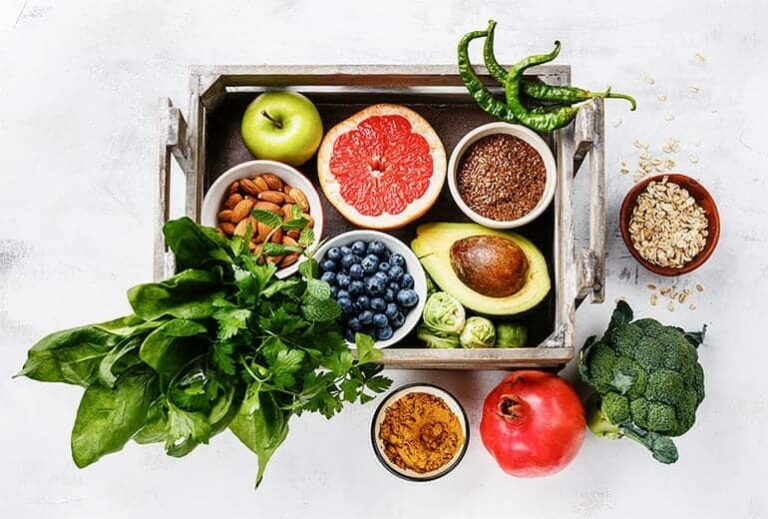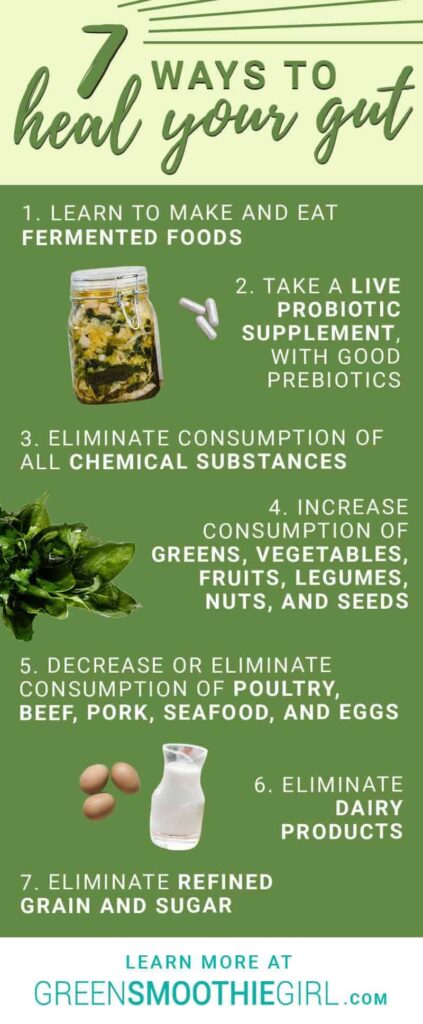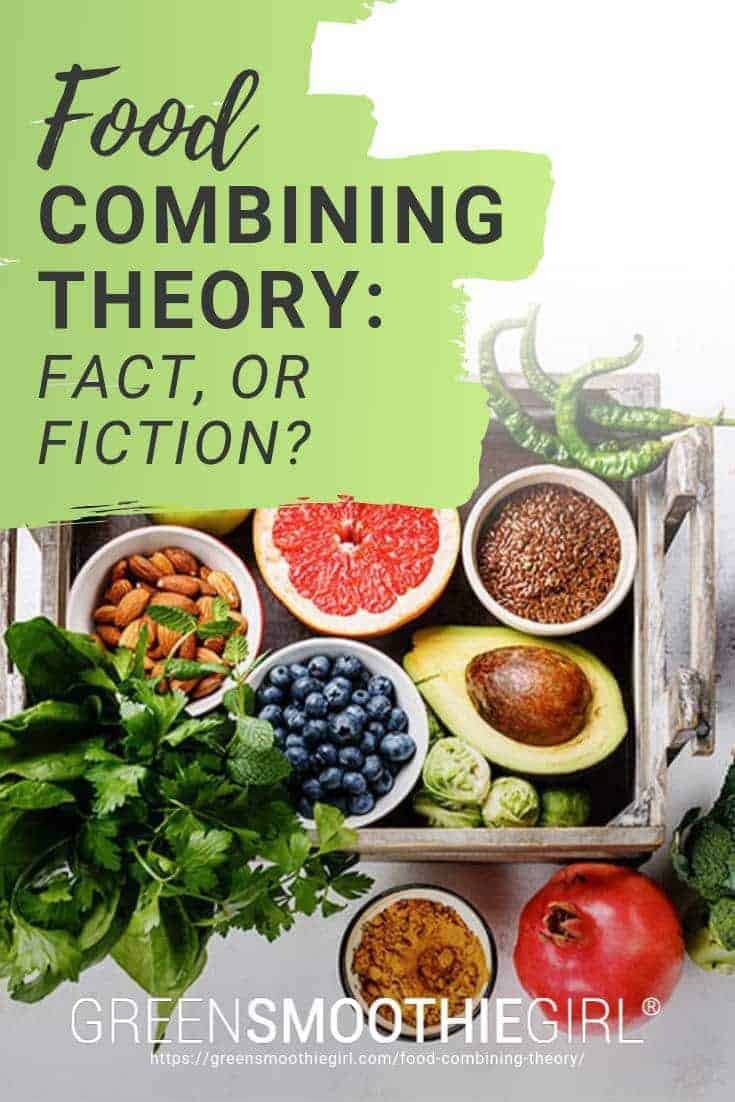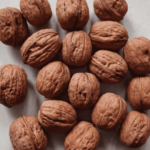Food Combining Theory: Fact, or Fiction?

Food combining is one topic in the field of nutrition that has many people confused. In simple terms, this is the idea that some foods should not be eaten with other foods. The schools of thought tend to be either (a) Ayurvedic theory or (b) newer theories that starches shouldn’t be eaten with protein-rich foods, etc. So, is food combining fact, or fiction?
Let’s take a look at both of these schools of thought, and I’ll share with you:
- caveats for anyone wanting to avoid certain food combinations
- how to heal the gut so you can let go of worrying about food combining
The Truth About Food Combining
In this article:
- Ancient (Ayurvedic) Food Combining Theory
- Westerners Adopting Ayurvedic Food Combining Theory
- The Importance of Live Enzymes
- Modern Food Combining Theory
- The Argument About Animal Proteins
- Seeds, Nuts, and Whole Grains for the Digestive System
- My Modern Food Combining Theory Concern
- 7 Ways To Heal Your Gut
Ancient (Ayurvedic) Food Combining Theory

Ayurvedic is a food combination theory based on ancient India's study and practice of how we eat food
Ayurveda theory is a body of work I respect, and it often resonates as truthful (or at least interesting).
It's based on ancient India’s study and practice of how the food we eat (as well as other lifestyle choices) affects the body, mind, and soul. (In a packaged-food world, most of us have lost touch with mindfulness about what we eat.)
For example, ancient near-Eastern wisdom suggests you eat all the tastes in each meal: sweet, salty, sour, pungent, bitter, and astringent. The idea is that doing so will leave you feeling very satisfied in both body and soul, diminishing the desire to snack or make poor food choices.
The three “types” or “doshas” in Ayurvedic tradition are Vata, Pitta, and Kapha, and each of them is thought to be inherent in each of us, but we are dominant in one or two of them. Depending on your dominant type, you're encouraged to eat specific types of foods. For example, the Vata type is supposed to stick primarily to cooked foods and stay away from cold or raw foods.
Westerners Adopting Ayurvedic Food Combining Theory
Some Westerners (North Americans and Europeans) learn about Ayurvedic theory and Ayurvedic food combining, though, and adopt the rules without understanding the “why” behind the principle, or adjusting relative to our unique modern food supply.
For example, I’m not sure most Americans would know what an “astringent” taste is, or even “pungent.”
It may be problematic to attempt to strictly adhere to Indian rules when you consider these rules or guidelines are several thousand years old, and the foods Indians ate may not be available to us.
As an example of how food combining principles of Ayurveda, while helpful, may not serve us as a prescriptive roadmap to eating right, virtually all Americans are eating some amount of processed food that comes in packages, boxes, and cans.
(We’ll assume you don’t eat drive-thru food, which might be another category entirely.)
If you eat any processed food, such as sugar and white flour, you are eating differently than anyone in the history of human beings has ever eaten, until about the last 100 years.
Prior to then, people have eaten only natural foods, grown in black soil or killed in the wild.
So you, the modern North American, maybe in much higher need of enzymes, which are needed to properly digest food.
An ancient Indian might be able to eat virtually all “warm” food because his dosha type is Vata, but all of that food is whole-grain rice, sweet potatoes, and medicinally powerful spices like turmeric and curry, for example.
If an American’s warm food is Campbell’s tomato soup, fried potatoes, or restaurant dishes, there’s a dramatic difference in the nutrient levels compared to those that were were assumed by the Ayurvedic masters.
It’s clear that the vast majority of us need more raw plant food, which is not heated above 116 degrees, to supply digestive enzymes. (Think salads, sliced veggies, fruits, and green smoothies.)
The Importance of Live Enzymes

Eating raw, uncooked food such as bean sprouts gives you enzymes to work with when digesting.
When we cook our food, many vitamins remain intact and some minerals are undamaged, but enzymes are another story. Live enzymes in a raw plant food are destroyed by heat. The pancreas and liver supply digestive enzymes to make up the difference, but you have a finite quantity of enzymes available for a lifetime.
Some estimate that eating an all-cooked diet would completely burn out a lifetime of endogenous (produced by the body) digestive enzymes within about 35 years.
And as Dr. Bernard Jensen said, “When you lose your enzyme production abilities, you die.”
In other words, every cell and organ is affected when the “draw” on your pancreas and liver has been exhausted. Eating only cooked and processed foods can manifest as, or contribute to, any number of different disease states. Americans trying to live by ancient law sometimes reject all raw foods, because they feel that the “dosha” is a diagnosis, and the suggestions from thousands of years ago are a prescription or a “diet” (which is a modern construction).
Those eating all cooked food in the modern world may find themselves depleted of nutrients, with literally hundreds of symptomatic ways this may manifest.
So, while you may wish to experiment with “warming” foods, I hope you will recognize that a modern adaptation may be to take digestive enzymes, eat only nourishing whole foods and wild foods, or better yet, seek out salads, green juices or smoothies, and other enzyme-rich plant foods as well. You could also “heat” some of your soups and other foods in a dehydrator below 116 degrees, the point at which enzymes die.
After my own early adulthood of eating a processed-food diet, I committed to eating 60 to 80 percent raw plant foods at every meal and have done so for over 20 years now. By doing so, I reversed 21 different disease states (including Hashimoto's, mini-strokes, and a large tumor) which have not recurred, and I got off four prescription medications.
Modern Food Combining Theory
Other nutrition fads or theories that are much more recent have been emphatic that certain foods shouldn't be eaten together, and the entire premise of this proper food combining theory is that different food types digest more quickly, or more slowly
So, while a slow-digesting food (like pork, which is dirty and contains no fiber) may take hours, or even days, to make its way from the mouth to the anus (a length of 30 to 35 feet in humans), a quickly digested food (like an apple) may take as short as 20 minutes.
The food theory is that if these foods are eaten together, the food that naturally digests quickly will ferment in the gastrointestinal tract since it becomes a commingled mass, trapped with the longer-digesting food.
While there may be some validity to this theory, I’ve seen absolutely no evidence to prove that specific classes of foods should not be eaten together or that doing so causes disease risk.
(And I’ve looked for a long time now, since these ideas came into vogue some 35+ years ago.)
A long-standing debate about what human beings should eat, given our very long digestive tract, isn’t the purpose of this article.
Suffice it to say that we aren’t built like carnivorous cats, who can digest no-fiber animal proteins easily and quickly, because the digestive tract is virtually a straight line from mouth to anus.
[Related post: The Carnivore Diet: 11 Bizarre Claims of the All-Meat Diet]
The clearest finding of thousands of nutrition studies is that, regardless of whether or not we eat animal flesh, vegetables, fruits, and other plant foods (virtually all of them high in fiber) are extremely important in the diet.
They shouldn’t be a small side dish, but rather the crux of the diet at every meal.
Our digestive process for virtually all plant foods is under an hour, so the theories that certain types of plant foods and other types of plant foods shouldn’t be eaten together make little logical sense, even if you buy into the premise of the food combining principle.
If they digest poorly in combination for you, the more likely culprit of your discomfort is underlying gut inflammation.
The Argument About Animal Proteins
If there’s an argument to be made for not combining foods, it’s that animal proteins like chicken, beef, and pork, which can take days to digest (especially for a damaged and slow digestive system), should not be combined with fruits, the most quickly digested foods.
Of course, we should also consider the related argument that a very minor portion of any meal, and the overall diet, should be animal products, if you eat them at all. After all, they come with no fiber and do not assist peristalsis and do not sweep, or clean, the tract. Undigested protein fragments in most modern, animal-protein-rich diets circulate in the blood, leading to countless inflammatory states.
If you eat animal meat, it’s very wise to eat greens and vegetables with it.
Seeds, Nuts, and Whole Grains for the Digestive System

Eating seeds, nuts, and whole grains help keep your blood and digestive system clean
Legume seeds and whole grains, nuts, seed fruits, and seeds are also high in fiber and help keep your entire digestive system, and the blood, clean.
You have hundreds of natural, nutrient dense foods to choose from in these categories. Most people don’t realize that “grains” don’t have to mean wheat, which has become problematic. You have quinoa, teff, faro, millet, amaranth, and buckwheat, for example.
(Some of those aren’t even technically “grains,” though they’re somewhat starchy and can be prepared and eaten like grains.)
I bring these up to say that we shouldn’t be so myopic as to think that because wheat has been hybridized, processed, and roundup-sprayed to death, that there aren’t other grains that have sustained most of the people of the earth for literally millions of years.
In fact, most of the world’s populations have subsisted on mostly grains for centuries.
My Modern Food Combining Theory Concern
My concern about the modern food combining theory is different than my concern about people who strictly adhere, in the Western world, to the Ayurvedic theories. And that concern is the most important point here:
Americans fearful of eating starchy foods (like potatoes or grains) together with fruits, in their anxiety about planning their food intake around these rules, may actually end up eating fewer fruits and vegetables.
That would be tragic in the Western world where all the nutritional deficiencies relate to lack of fiber and lack of micronutrients (these are found in abundance in greens, vegetables, fruits, legumes, whole grains, nuts, and seeds).
With the average American getting 1 to 2 servings of vegetables and fruits daily, rather than the 20 servings our ancestors ate several generations ago—and most Americans eating no legumes in any given week—our main focus should be simply on getting more of these excellent, nourishing foods.
Now, more and more of us, in our third and fourth generation of eating mostly processed foods, have states of gut disease, both diagnosed and undiagnosed, that cause food sensitivities or even full-fledged food allergies.
If you notice negative reactions when you eat two food groups together, it would be wise to stop combining those foods.
However, we shouldn’t confuse symptoms with the root cause. If combining plant foods causes gastric upset, headaches, brain fog, rashes, or other symptoms common to food allergies, the food isn’t the problem—the gut is.
It isn’t a normal state of affairs, even if it’s now a common state of affairs, to have trouble digesting wholesome foods.
Healing the gut is an important goal. So, how do we do that?
7 Ways to Heal Your Gut
1. Learn to make or eat fermented foods.

Fermented foods contain lots of probiotics and rehabilitate a damaged microbiome. Make sure to combine this with a high-fiber diet.
If you’ve been on antibiotics (ever), learning to make and eat fermented foods, several different types, is one of the most important things you can do to rehabilitate a damaged microbiome. (This must be combined with a high-fiber diet, so living probiotic organisms in your cultured foods have something to attach to and build on in the gut.)
Many people think the negative effects of antibiotics will be short-lived, but unfortunately, without nutritional and possibly supplemental rehab, too many people suffer for years, or even decades, after antibiotic use.
You may be aware that yeast infections are common after antibiotic use, and that’s because the normal population of yeast in the body gets out of control without the healthy microbiome to keep it in balance.
Less likely, but still common, significant risks of antibiotic use are small intestinal bacterial overgrowth (SIBO), recurrent viral and bacterial infections, Crohn’s disease, irritable bowel disease (IBS), and leaky gut syndrome.
Fermented foods are a lost art in the industrialized world where several generations ago, we began canning and preserving everything through various means.
But, when native populations all over the world “preserve” foods using cultures, the human beings who eat those foods get the benefit of billions of living, “probiotic” microorganisms that are protective against pathogenic bacteria that could make them ill.
In this video, I teach you more about rehabbing your gut with live, cultured foods.
2. Take live probiotic supplements.
Take a small-batched, live probiotic supplement, with good prebiotics (the “food” of probiotics) added. This is not usually sufficient, by itself, to repopulate a damaged GI tract with the “good” bacteria that keep the bad bacteria in check, but it can be an important part of your healing. And again, I can’t emphasize enough that this should be combined with a high-fiber diet.
3. Remove all chemical substances.
Eliminate all chemical substances, including pharmaceutical medications, that you can. (Do not discontinue prescription drugs without the guidance of your doctor.) Doctors feeding human beings chemicals as a remedy for illness are new in the past 120 years.
Chemicals are not metabolized by the gut and imbalance the entire microbiome.
Pharmaceuticals disrupt normal gut function and can even cause tiny holes to form in the lining of the intestines, causing “leaky gut.”
This diagnosis is becoming an epidemic of alarming proportions, and since allopathic doctors do not diagnose it, most people don’t know they have it. It causes no end of inflammatory disease, as toxins “leak” into the bloodstream.
4. Increase your consumption of greens, vegetables, fruits, legumes, nuts, and seeds.

Eating more and (lots of) greens will help heal your intestines and colon.
Consider the entire classes of whole foods you’re reactive to as temporary eliminations until you heal your intestines and colon.
5. Decrease or eliminate your consumption of poultry, beef, pork, seafood, and eggs.
6. Eliminate dairy products from your diet.
Dairy isn't easily digested by humans, and they contain added hormones, antibiotics, steroids, and even pus and blood from the cow, in modern dairy production.
7. Eliminate refined sugar and refined grain flours from the diet.
These foods aren’t just “empty calories.” They’re also gluey in the gut, slowing digestion and harming your ability to digest food over the course of a lifetime (and you can still get good sugar from fruits and other whole foods!).
I hope these tips serve you well in evaluating whether to add a correct food combining diet to what you’re working on in improving your diet to live to 100 without a disease.
The food combining theory is indeed a complex and broad topic that needs a deeper understanding to know its real purpose. It's also important to learn the difference between Ayurvedic and modern food combining theories to see which is more beneficial. Apply what you've learned here about combining food and experience a healthy way of eating food!
In your opinion, why do we need to understand the facts about food combining? Share your thoughts in the comments section!
Up Next: Herxheimer Reaction: What Is It, How Do I Clear It?

Disclosure: This post may contain affiliate links that help support the GSG mission without costing you extra. I recommend only companies and products that I use myself.
Editor’s Note - This post was originally published on April 26, 2018, and has been updated for quality and relevancy.
Posted in: 12 Steps To Whole Food, Natural Remedies, Whole Food

















